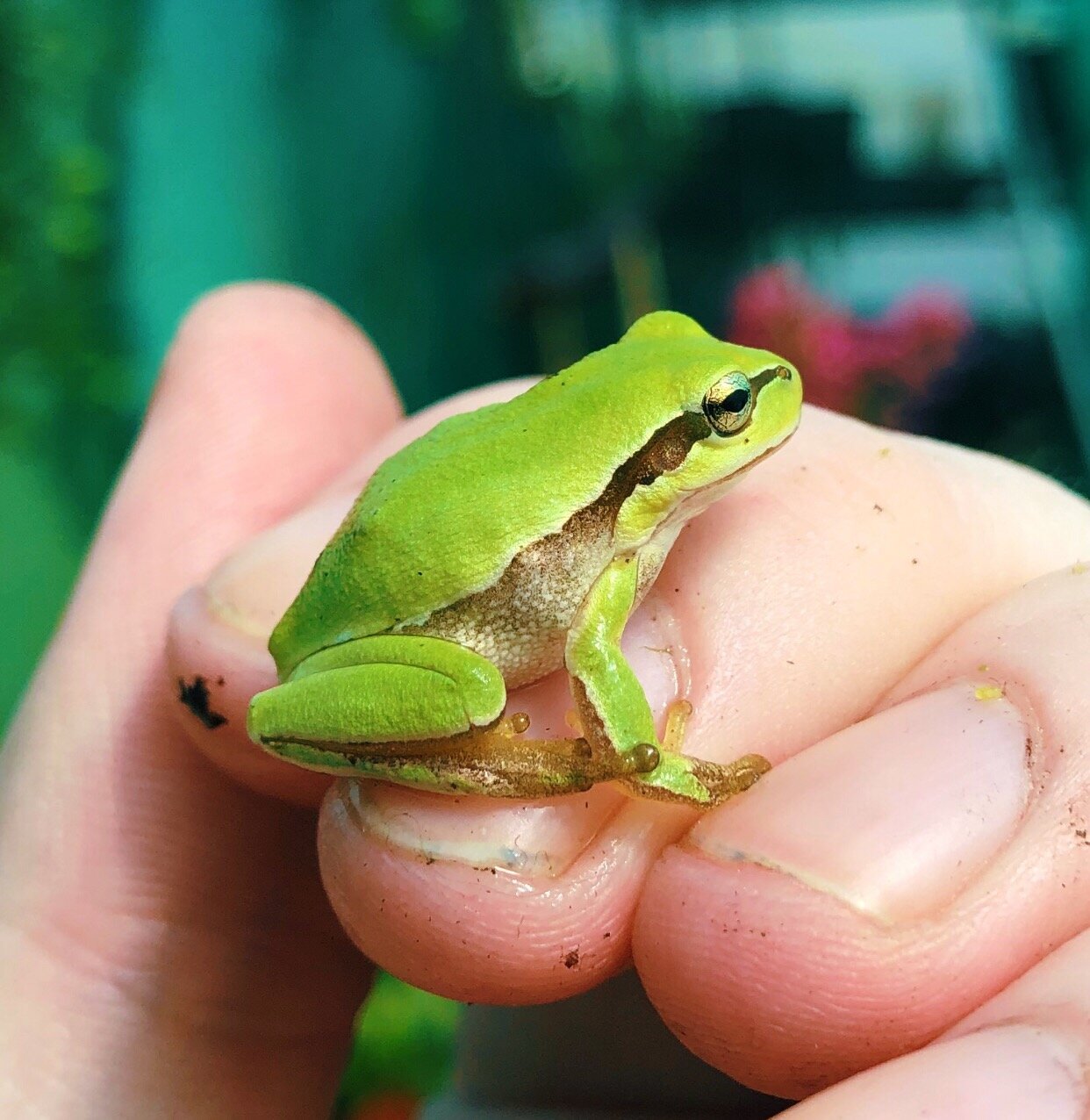European Tree Frogs
European tree frogs are delightful creatures and are often kept as pets by amphibian enthusiasts. When considering keeping them in captivity, it's essential to provide them with a suitable environment and proper care to ensure their well-being.
A subadult frog, nearly fully grown.
The European tree frog (ETF) is native to various regions in Europe, extending from France in the West, as far as Russia and Turkey in the east and south, and even far north into Scandinavia. They are very adaptable and found in a wide range of habitats, from woodlands and meadows to marshes and gardens, typically close to water bodies like ponds, lakes, or slow-moving streams.
It is believed that ETFs were present in the UK until the 1700s, based on historical records, however there have also been breeding populations in various areas reported later in the 20th century. It is believed they were introduced from abroad, and ultimately these populations died out after a few decades, reportedly due to poaching (the males are easy to find based on their loud calls). Some have also suggested that this species should be recognised as a UK native, and could become part of some rewilding projects in the future, particularly after the reintroduction of the beaver here - pools and wetlands created by beaver dams are excellent habitat for ETFs and a multitude of others.
European tree frogs are relatively small, with adults ranging from 3 to 5 centimeters (1.2 to 2 inches) in length. They have smooth skin with a bright green or brownish-green coloration, which provides excellent camouflage in their natural environment. One of their distinctive features is a dark stripe that runs along each side of their body, starting from the snout, going through the eye, and ending at the hind legs.
Housing
As tree frogs, Hyla arborea are excellent climbers and are well-adapted to life in trees and shrubs. They are mostly nocturnal, becoming more active during the evening and night, but can often be seen sunbathing during the day - they love the heat, often spending a whole day in the same spot under the sun. There are two broad options for keeping this species: indoors or outdoors. As the ETF is native to Europe, it is well-suited to our climate and can be kept in secure enclosures outdoors. Equally, they will thrive in an indoor vivarium given the correct conditions. This is a very easy species to keep, perfect for beginners, nonetheless popular with experts alike.
Indoors: As these frogs are fairly small, a 45cm cube vivarium would be suitable for a group of up to 4 adults. Larger is better if this is an option, but they are happy in most vivariums. I use Arcadia Jungle Dawn UV lights above my vivariums, they are perfect for the animals and the plants, and are on for 8-12 hours per day depending on the season (more on this in the breeding section), although 6 hours is probably sufficient. They will benefit from a bioactive vivarium, this is very simple to create and highly beneficial for your frog’s health, and some plants for the frogs to sit on and bask under the lights. I do not use any added heat, as the warmth from the UV lights is more than sufficient, and the frogs would naturally experience a drop in temperature at night.
Outdoors: ETFs are perfectly suited to our climate, so can be kept outdoors in a vivarium or greenhouse-style setup. Note that enclosures must be escape-proof.
Some keepers elect for a aviary-style enclosure. These work well, allowing the frogs to experience the full range of weather, from sunshine to pouring rain, and the wire mesh prevents escape. Planted up these can look very attractive. They should always have access to water; the frogs will often sit in the water at night to rehydrate after a hot day. Under these conditions, the frogs will likely breed in the spring/summer during warm weather. Exposure to the cycle of seasons triggers this, as it would in the wild.
The other option is keeping ETFs in a greenhouse-type setup (this could be a greenhouse, or a polytunnel, summer house, conservatory etc.), either allowing your frogs to roam free or keeping them in a mesh/wire enclosure within the greenhouse. My breeding group of tree frogs live in my butterfly house, a large polytunnel, which I have secured to prevent escapes. As there is only one door to the polytunnel, it was straightforward to make sure there were no opportunities for escape. The frogs will spend most of their day basking on plants, stones, or on exposed metal from the structure, soaking up the heat and UV. At night, they can either be found hunting insects among the plants or croaking in their pond. They spawn fairly regularly, with a large spawning at the start of the season (300-500 eggs), followed by a few smaller spawnings over the summer and early autumn (50-200 eggs). Those from the earlier spawnings tend to reach adulthood by their first spring, often breeding at about a year old.


